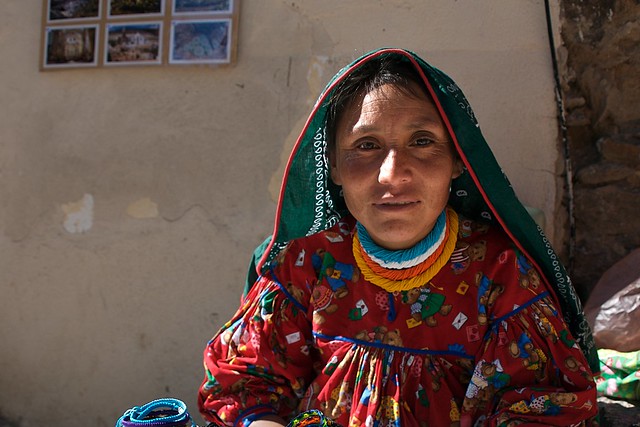9 Facts About Human Trafficking in Mexico

Human trafficking in Mexico has recently risen to have the country become one of the most popular trafficking destinations in the world. This is largely due to its high level of corruption and powerful drug-cartels that support the illicit practice. This has been coupled with the nation’s growing national awareness toward the issue. The recent government attempts to combat it through policy change reflect this. Additionally, there is an emergence of organizations designed to reintegrate victims of human trafficking in Mexico into society.
What is Human Trafficking?
Human trafficking is the third most lucrative industry in the world. It is characterized as a form of exploitation through the act of obtaining someone for (often sexual) services and subjecting them to a form of involuntary servitude. Its somewhat confusing and wide-ranged definition creates a vast multitude of unique cases, allowing many criminals to slip through the cracks. Many countries all of the world struggle with passing sufficient anti-human-trafficking policy. This partially explains its prevalence and therefore profitability worldwide.
9 Facts about Human Trafficking in Mexico
- Poor Data and Broad Targets
Much of the criticism surrounding past Mexican administrations failure to fix the problem focuses on two pillars: poor data and broad targets. The leading government commission appointed to human trafficking (the Inter-Ministerial Commission Against Human Trafficking) reports positive results. However, its technical secretary has spoken out, saying the data is unreliable. Additionally, while high ambitions seem good in principle, goals will be stunted if they are not broken into manageable parts. This was certainly the case for past administrations, according to Monica Salazar, head of non-profit Dignificando el Trabajo. Salazar blames past administrations with a lack of clarity, which made priorities vague and indeterminate. - Its Prominence in Mexico
While human trafficking ranks third internationally for most lucrative markets, it is second in Mexico. The country has also assumed the number one rank for female sex-trafficking and makers of child pornography in the Americas. Much of that comes from the government’s corruption and inability to control the drug-cartels that wreak havoc across the country. These groups are largely responsible for the kidnapping of women and children into the sex and slave trade. - States Lacking Compliance
Many states are in tune with Salazar’s comments on Mexico’s grandiose plans to combat the issue of human trafficking in Mexico. Out of the 21 states, 12 have still not updated their legislation to be in accordance with the most recent national law on human trafficking. Their failure to adhere to this mandate is telling as to why the country has made little progress on the issue. - International Roots
A large misconception regarding trafficking is that it does not just involve citizens of the country it takes place in. In Mexico, many victims are solicited from surrounding countries, and from Eastern Europe over the internet. On the opposite end, many culprits of the trafficking travel to Mexico because of its loosely-regulated trafficking reputation. - Tenancingo: An Epicenter for Trafficking
Despite its small size and a population of only 13,000, Tenancingo wields an international human trafficking presence. Susan Coppedge, a former Assistant U.S. Attorney, says young girls from small rural communities across the country are unfamiliar with its reputation. They are therefore are not suspicious of men from there. - Recent Decriminalization of Sex Work
Next in these facts about human trafficking in Mexico is that Mexico City recently started momentum towards anti-sex trafficking legislation. It did this by unanimously passing a bill that indirectly decriminalized sex work. The bill removed a law which stated that prostitutes and their clients could be fined if neighbors complained. Although the latter part already made the law unreliable, it still marks a start of anti-sex-trafficking legislation under President Andres Manuel Lopez Obrador. - Local Combat Organizations Are Best
Since human trafficking maintains many different forms, it can largely go unnoticed and disappear in the shadows. However, the optimal way to tackle this issue is to let local organizations that are well-versed in their particular areas take charge. With adequate funding from the government, these groups accomplish a lot to help the current situation in Mexico. - These Organizations Exist
But they do not have enough government support. These nonprofits work behind the scenes with a policy such as the decriminalization of sex work. However, they do not receive the funding they deserve. For the government to live up to its goals of making real progress on eliminating human trafficking in Mexico, they must dedicate the finances to their objectives. - There is a Need for Proper Training
A large portion of government money allocated to ending human trafficking should be dedicated to the training of people working at groups to end it. The broad nature of human trafficking packages each case differently. Therefore, training and hiring people in and from many different backgrounds will best help alleviate the issue.
How to Help
A final word about human trafficking in Mexico is that groups such as Polaris provide direct funding to disrupt the human trafficking trade in Mexico. By advocating for them, as well as The Borgen Project, they grow in influence and stand a better chance of grabbing the government’s attention.
– Liam Manion
Photo: Flickr
